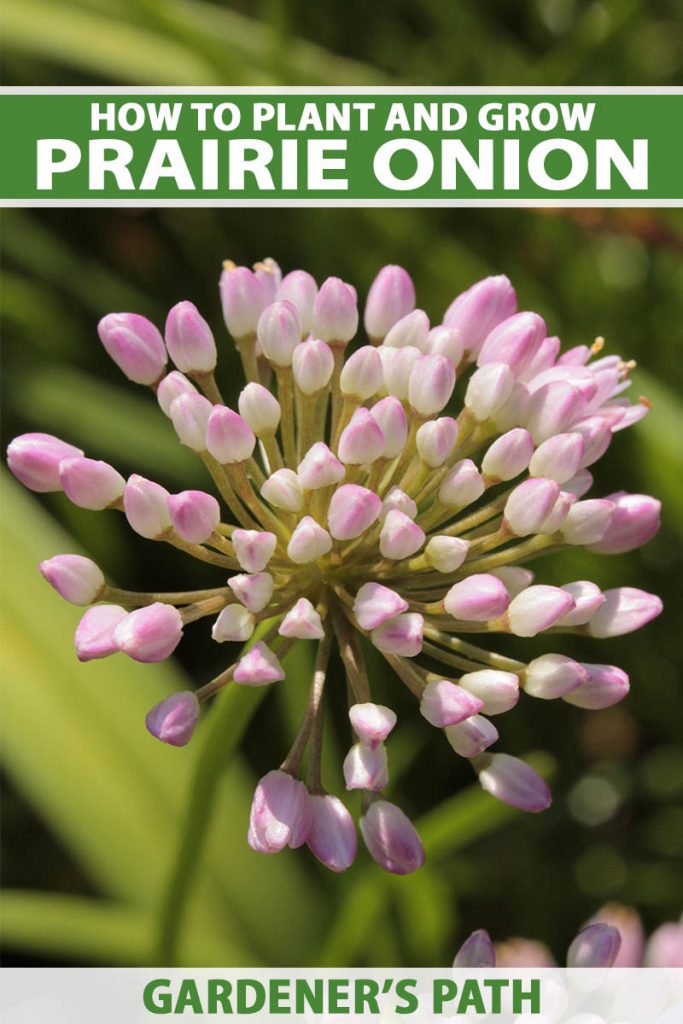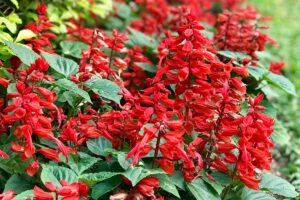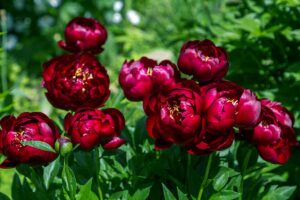Allium stellatum
Prairie, cliff, pink wild, autumn, or fall glade onion… I’ll just sit back and let the many common names of Allium stellatum tell you all about this pretty plant for me.
“Pretty” and “onion” in the same sentence? Why, yes!
Early in the spring when there isn’t much green showing in the garden yet, this plant is sprouting leaves.
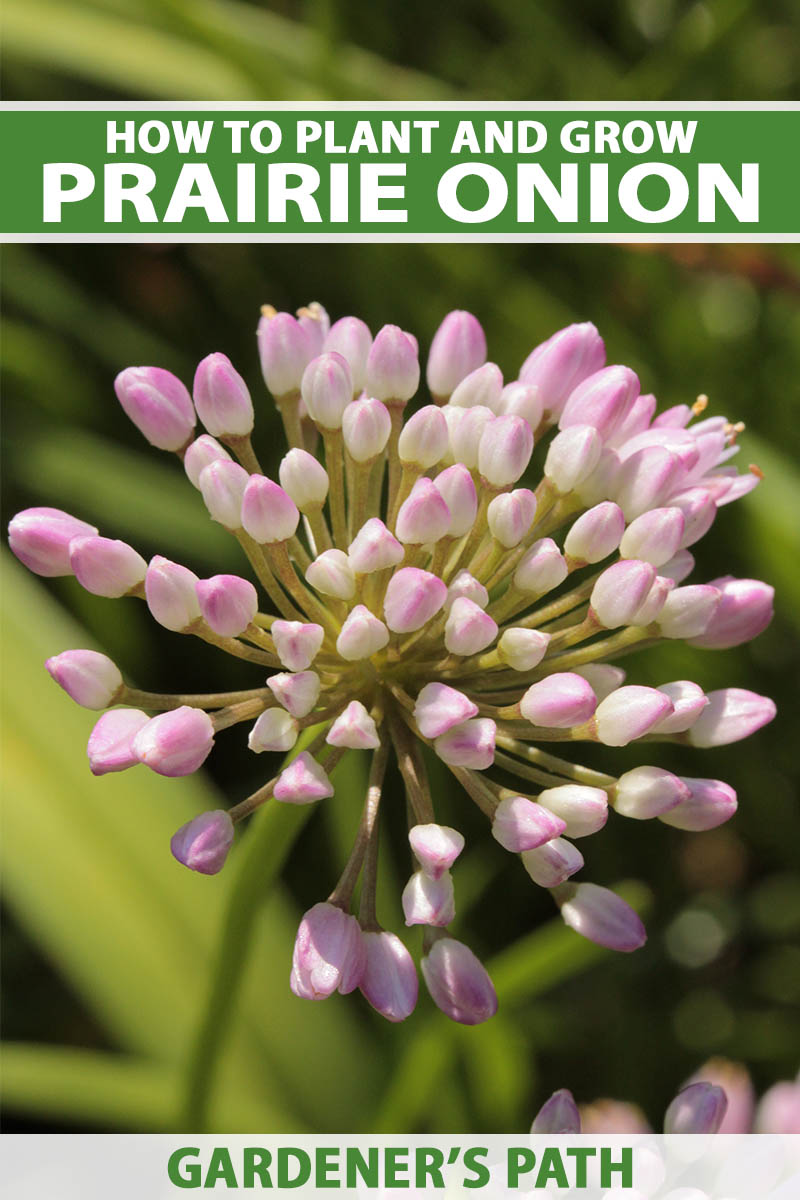
We link to vendors to help you find relevant products. If you buy from one of our links, we may earn a commission.
When summer and fall roll around, it provides delicate pops of light pink to lavender star-shaped blooms, topping each stem in an umbrella-shaped cluster.
I suppose there is more to tell you about this plant… such as it’s entirely edible, loves dry areas, and repels insect pests and rodents from the garden.
In this guide, I’ll cover to how to cultivate this easy, attractive garden addition.
What You’ll Learn
Cultivation and History
Native to central North America, A.stellatum, along with several other close family members, were used as food and medicine by Native Americans and early settlers for generations.
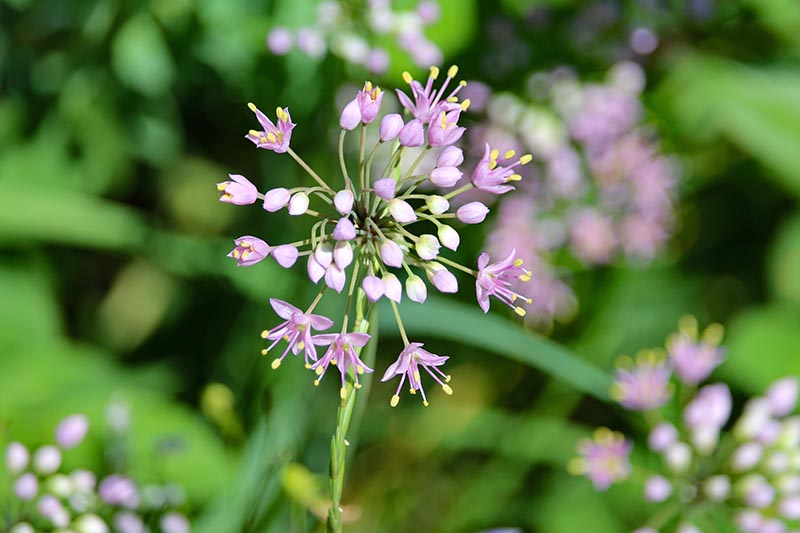
This onion family member is completely edible, from the bulbs to the flowers. The bulbs were and are eaten raw or cooked and the leaves and flowers may be eaten fresh.
Sweetened decoctions of the bulbs were given to children to relieve cold symptoms, and extracts from the plant were used to alleviate congestion and fever, and to help heal infections.
The flowers pop open on 12- to 18-inch-tall stems in July or August and will provide a show of pink to light purple blooms for about three weeks. They attract and are pollinated by a variety of insects, especially small solitary bees.
A. stellatum looks very similar to and is easily confused with A.cernuum, also known as nodding onion.
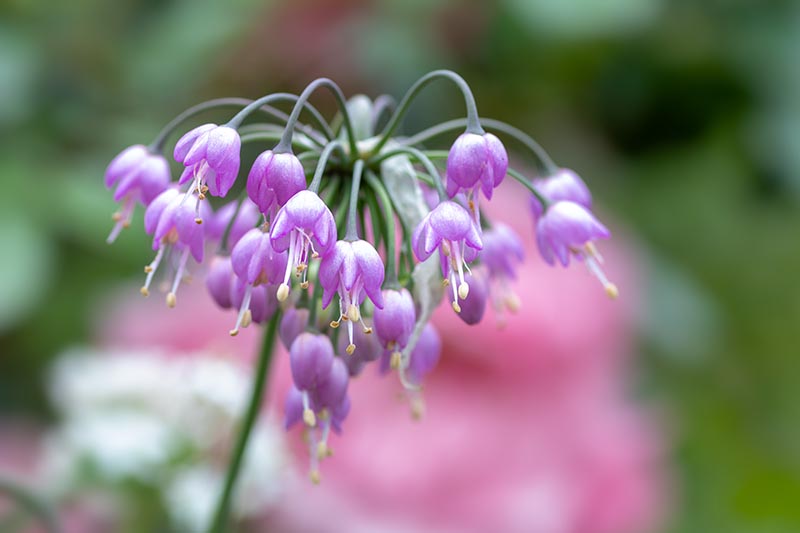
The most noticeable difference is that nodding onion’s umbel bends downwards. And individual prairie onion flowers are more star-shaped than the rounded blooms of A. cernuum.
Luckily, they are both edible if you happen to be foraging for wild onion and don’t know the difference between these two pinkish-purple flowering alliums.
Propagation
This self-pollinating plant is easily propagated from seed or bulb divisions.
From Seed
Let flowers bloom and go to seed. Collect the small black seeds from the plant in autumn, once the seed head is brown and dry.
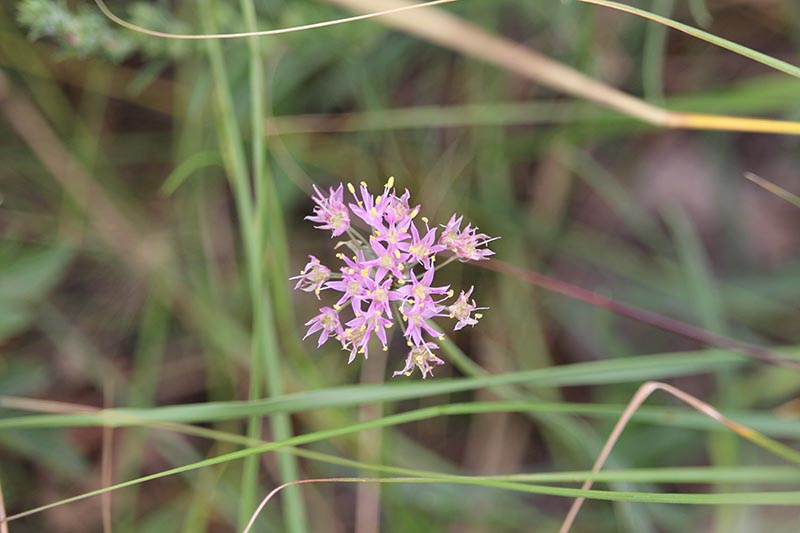
The seeds need a period of cold stratification before they will germinate, so the easiest option is to sow the seeds directly into the ground in the fall and watch for them to germinate the following spring.
If you prefer to save the seed to sow in the spring, store them over winter in a cool dry spot. Before you plant, refrigerate them in moist sand for at least 60 days.
Sow them in pots indoors to get an early start, or direct seed where you want to grow outdoors after all risk of frost has passed.
Sow two to three seeds 1/8 inch deep in small pots with drainage holes, filled with a soilless porous propagation medium, and keep the medium moist but not soaked.
Keep the pots in a bright, 64-72°F spot until the seeds germinate, which typically takes about 56-70 days. When the plants are large enough to handle without danger of crushing the fresh foliage, you can transplant them into your garden or into containers.
Dig a hole the same depth and width as the pot, loosen the soil on the edges, carefully remove the plant, and situate the root ball in the center of the hole.
Make sure the crown of the plant isn’t completely covered in soil – it should be level with the surface of the soil. Backfill the hole with soil and water in lightly.
Space plants four to six inches apart to allow for adequate airflow.
Growing this beauty from seed is easy but it may take several years of growth before the plant produces flowers, so making bulb divisions can be a quicker way to multiply the number of blooms in your garden.
By Bulb Divisions
Once a plant has eight to 10 shoots, or every third year, you can dig up and separate the bulblets from the parent bulb.
You can divide prairie onions at any time during the growing season, but the best time to separate and plant the bulbs is in the autumn.
After you have dug up the parent bulb, carefully pull the larger bulblets off, but leave any tiny offsets still attached to allow them to grow larger before separating in a later season.
Plant each new division and the parent bulb root side down about four inches deep and four to six inches apart into loosened soil. Cover with soil, and water lightly.
How to Grow
As a drought tolerant, cliff-loving native that’s hardy in Zones 3-8, prairie onions are easy to care for.
Besides soggy soil, the only other thing these plants are intolerant of is competition with tall, aggressive plants that can crowd them out.
Choose a sunny spot. While these plants prefer a full sun location, they will also tolerate part shade.
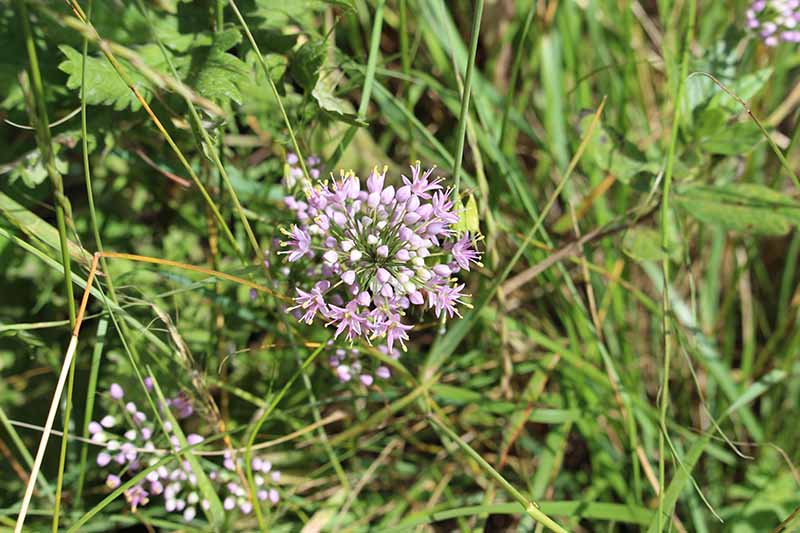
Prairie onions will happily grow in spots that would be inhospitable to other plants. They’ll grow in gravel, on limestone cliffs, and in dry sandy soil, loam, or chalky soil.
This plant prefers sandy soils with a pH of 6.6-7.5 but will tolerate your average garden soil as long as it drains well. That’s all they ask.
A. stellatum grows fibrous roots from the base of its bulbs that reach deep into the soil, and mature plants are drought tolerant.
If you water too often or if the soil is not well draining, the bulbs are susceptible to rot. Water occasionally when the soil is dry to at least four inches down in the absence of rain.
There is no need to go out of your way to feed this plant, but if you are fertilizing any surrounding plants in the garden, it won’t hurt prairie onion to get a little extra nutrition.
Growing Tips
- Plant in a full sun location.
- Make sure the soil is well drained.
- Remove seed capsules to prevent self-sowing.
Maintenance
These low maintenance plants require very little work, and will typically take care of themselves.
Since this plant self sows readily, you may want to remove the seed capsules if you don’t want them growing all over your garden.
The foliage dies back during or shortly after flowering and can be removed if you prefer a tidy garden, or left in place to decompose into the soil.
Where to Buy
Prairie onion is not commonly found in seed catalogs or at plant nurseries and garden centers. If you find some growing wild, you could collect seeds to start your own, or ask a friend or neighbor for a bulb division.

You can find A. stellatum seeds available from Everwilde Farms via Amazon.
Managing Pests and Disease
Fortunately, there are no serious insect pests and very few diseases that affect this plant. The oniony smell repels moles, rabbits, and browsing deer.
The diseases that can affect the foliage of A. stellatum also affect other alliums, but the known severity of these is limited.
Onion white rot is one disease that might attack your plants.
Infection by Stromatinia cepivora, a soilborne fungus, causes yellowing, wilted foliage and root decay, finally attacking the bulb. If your plant is infected, you will notice white fluffy fungal growth at the base of the bulb.
It is most common from midsummer to fall – roughly during the period when prairie onion is blooming – and thrives in waterlogged soil.
This fungal pathogen can survive in the soil for years. When the soil is dry and at least 75°F, it is a much less destructive problem.
Since bulbs can carry this disease, the best way to avoid it is to propagate your plants via seed.
If you notice leaf yellowing and wilting and find rot at the bottom of the bulbs, reduce watering to try to prevent the disease from progressing.
Best Uses
Rows of this beauty make beautiful short borders or edges, they do well in gravel and rock gardens, and they will hold their own in wildflower plantings.
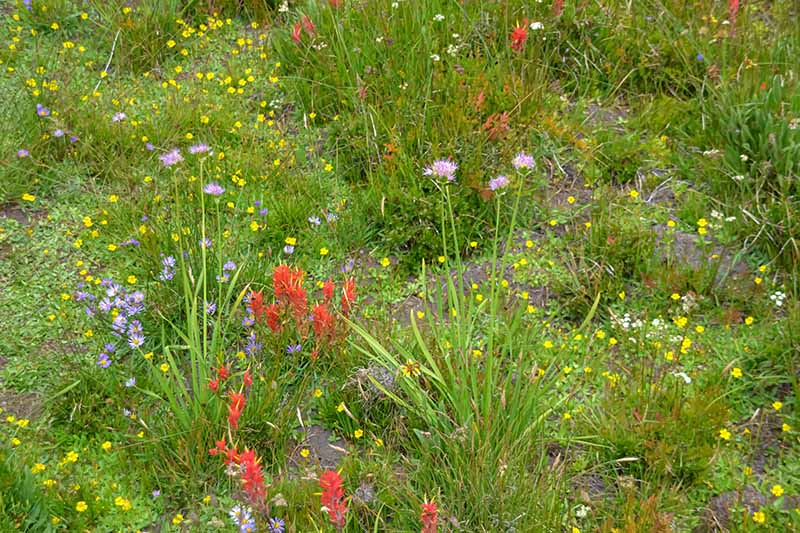
Plant with other native perennials, or beautify your vegetable garden and grow prairie onions near cabbage family members, lettuce, carrots, celery, tomatoes and herbs like dill, parsley, and chamomile.
Prairie onions help to repel pests and encourage beneficial insects and pollinators.
If you decide to snack on your prairie onions, try adding the flowers and chopped leaves to salads. The bulbs can be dug up and used exactly like bulb onions and are delicious either raw or cooked.
Quick Reference Growing Guide
| Plant Type: | Flowering perennial bulb | Flower / Foliage Color: | Pink to light purple/green |
| Native to: | North America | Tolerance: | Drought, frost |
| Hardiness (USDA Zone): | 3-8 | Maintenance: | Low |
| Bloom Time / Season: | Summer | Soil Type: | Sandy |
| Exposure: | Full sun to part shade | Soil pH: | 6.6-7.5 |
| Spacing: | 4-6 inches | Soil Drainage: | Well-draining |
| Planting Depth: | 1/8 inch (seed), 4 inches (bulb divisions) | Attracts: | Bees and other pollinators |
| Height: | 12-18 inches | Uses: | Borders, edging, rock or gravel gardens, wildflower plantings |
| Spread: | 1/4 inch | Order: | Asparagales |
| Time to Maturity: | Up to 2 years | Family: | Amaryllidaceae |
| Water Needs: | Low | Genus: | Allium |
| Common Pests and Diseases: | Nematodes, stem and bulb eelworms, thrips and onion flies and maggots; Onion white rot | Species: | stellatum |
Pretty in Pink and Smelling of Onion
Don’t judge her. It’s the height of summer and she’s blooming hard – she’s allowed to be a little smelly.
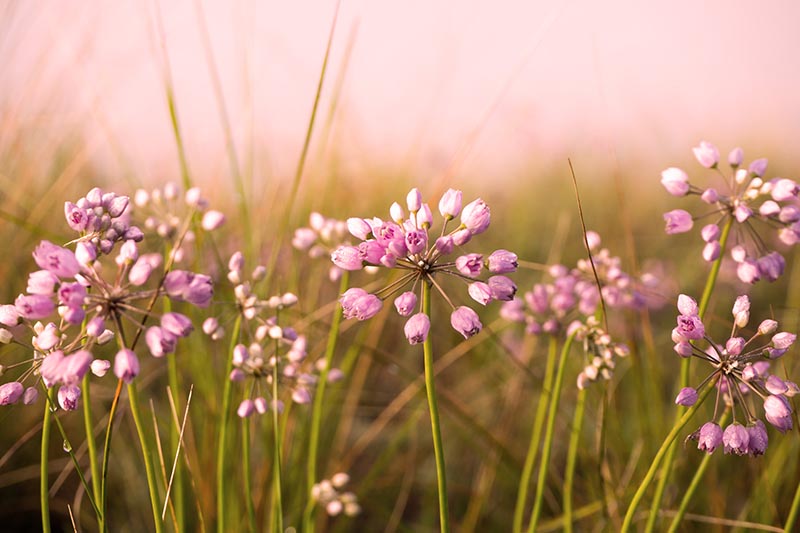
Low maintenance, attractive to pollinators and people, and happy to grow in places other plants would wither in? I’m sold on this edible beauty.
Are you growing prairie onions in your garden? Let us know in the comments section below!
And for more information about growing alliums in your garden, check out these guides next:
- Transform Your Yard for Weeks with Ornamental Alliums
- How to Grow Chives, and Why You Need To
- How to Grow and Care for Drumstick Allium Flowers
© Ask the Experts, LLC. ALL RIGHTS RESERVED. See our TOS for more details. Product photo via Everwilde Farms. Uncredited photos: Shutterstock. With additional writing and editing by Clare Groom and Allison Sidhu.
